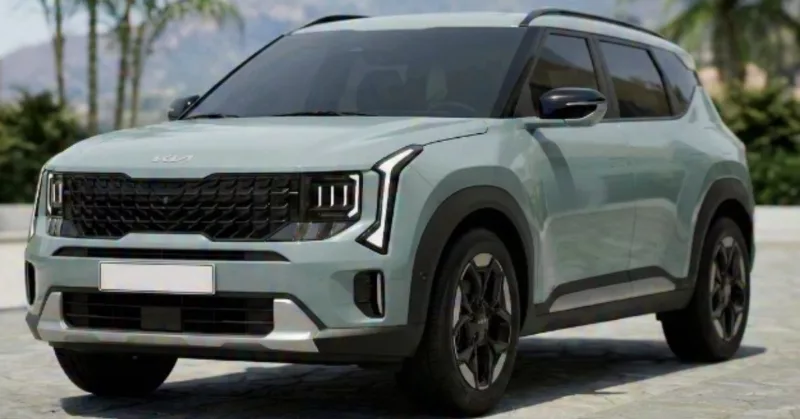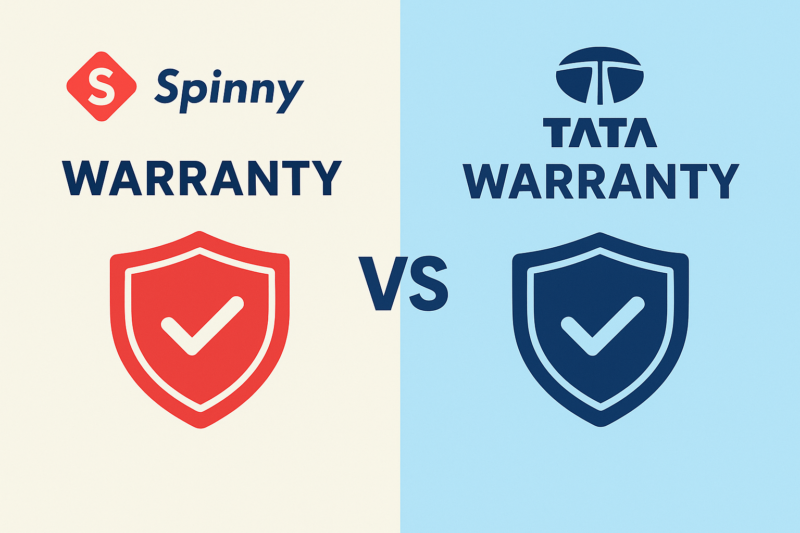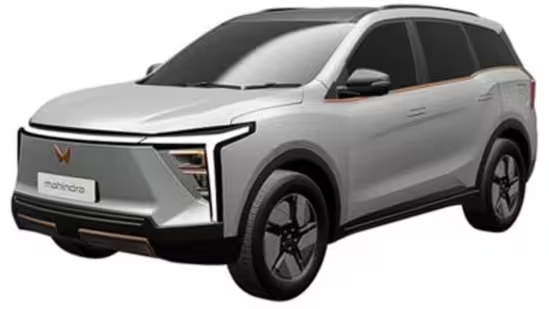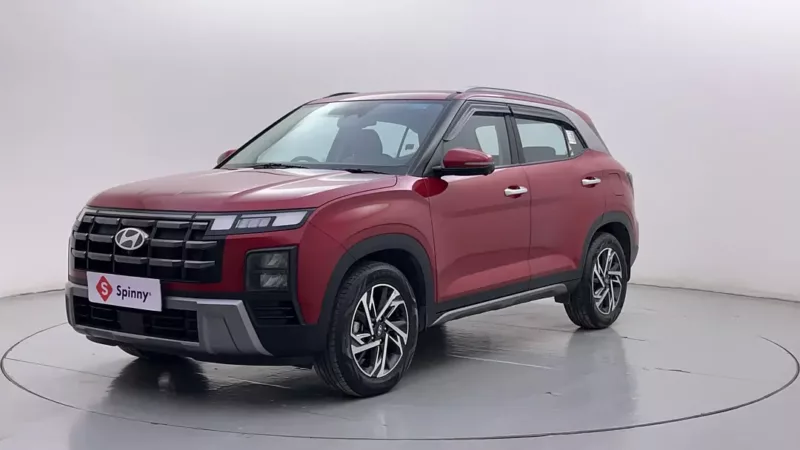Premium hatchbacks make a lot of sense from a financial point of view, making it an interesting segment. They surpass compact sedans in terms of cabin space and almost parallel the overall spaciousness and feature offerings of compact SUVs. Such characteristics make them the go-to cars for numerous buyers looking for a premium car but do not want to stretch their budget to a compact SUV. With this appeal, the premium hatchback segment in India currently sees fierce competition between the top three auto-giants with their contenders: Maruti Baleno, Hyundai i20, and Tata Altroz. All three of them are doing well in terms of sales and while the Maruti Baleno often grabs the throne of best-selling car in India, the Hyundai i20 and Tata Altroz never fail to place themselves among the top 10 selling hatchbacks. Considering their capability, it is only natural for someone to get confused while selecting a suitable option. This article compares all three premium hatchbacks on objective grounds and will help you pick the one that meets your requirements.
Hyundai i20 vs Maruti Baleno vs Tata Altroz: Dimensions and Boot
 Spinny Assured Hyundai i20
Spinny Assured Hyundai i20
 Spinny Assured Tata Altroz
Spinny Assured Tata Altroz
Hyundai i20 | Maruti Baleno | Tata Altroz | |
Length | 3,995 mm | 3,990 mm | 3,990 mm |
Width | 1,775 mm | 1,745 mm | 1,755 mm |
Height | 1,505 mm | 1,500 mm | 1,523 mm |
Wheelbase | 2,580 mm | 2,520 mm | 2,501 mm |
Boot Space | 311-litres | 318-litres | 345-litres |
Premium hatchbacks sit significantly higher than budget cars on the price chart and thus are expected to be spacious enough to comfortably seat five adults. As aforementioned, the premium hatchbacks in India almost match compact SUVs as far as cabin size is concerned and this is something that can give second thoughts to compact SUV seekers.
However, among these three contenders, the Hyundai i20 has the largest cabin. With the longest wheelbase and widest body, the Korean hatchback offers commendable legroom and shoulder room for rear passengers. Moreover, while its boot space is not as large as that of Tata Altroz, it should suffice most luggage-carrying needs.
The Tata Altroz and Maruti Baleno have marginal differences and are more or less similarly spacious for passenger accommodation. Being the tallest of them all, the Tata Altroz offers the best headroom that makes it the better option for taller passengers, and a big windshield, offering better visibility to the driver. Next, it also offers the largest boot space of 345-litre and in its CNG variants Tata has planted two 30-litre CNG tanks underneath the boot floor, so that they do not eat much into the boot space, leaving 210-litre of usable space. Moreover, it has a smaller floor hump in the middle as compared to the Maruti Baleno, making itself more comfortable for the middle passenger on the rear seat.
Naturally, looks make the first impression, especially when it comes to prized possessions like cars. As we look at these contenders back-to-back, the Tata Altroz and Hyundai i20 come across as better-looking cars than the Maruti Baleno. Tata’s Impact 2.0 design language has fashioned the Altroz splendidly and the neat mix of sharp and curvy elements and a wide smiling grille at the front, make the Indian hatchback look sporty as well as elegant. On the other hand, the Hyundai i20 features only sharp elements all-around and with a large blacked-out hexagonal grille flanked by angular headlamps, it looks snazzy and even sportier than the Altroz.
Hyundai i20 vs Maruti Baleno vs Tata Altroz: Engine & Transmission
Hyundai i20 | Maruti Baleno | Tata Altroz | |
Engine | 1.2-litre petrol engine 1-litre turbo petrol engine | 1.2-litre petrol engine 1.2-litre petrol engine + CNG kit | 1.2-litre petrol engine 1.2-litre turbo petrol engine 1.5-litre diesel engine 1.2-litre petrol engine + CNG kit |
Power | 83 PS 120 PS | 90 PS 77.49 PS | 86 PS 110 PS 90 PS 73.5 PS |
Torque | 114 Nm 172 Nm | 113 Nm 98.5 Nm | 113 Nm 140 Nm 200 Nm 103 Nm |
Transmission | · 5-speed manual gearbox and CVT for NA engine 7-speed DCT automatic for turbo engine | · 5-speed manual gearbox and 5-speed AMT | · 5-speed manual gearbox as standard · 6-speed DCT automatic for NA engine |
Mileage | 19.6 – 20.3 km/l | 22.35 – 22.94 km/l (petrol) 30.31 km/kg (CNG) | 18.5 – 19.33 km/l (petrol) 23.64 km/l (diesel) Approx. 26.49 km/kg (CNG) |
The powertrains of all three premium hatchbacks are very much in line with the intent their designs present. Moreover, offering petrol, turbo-petrol, diesel, and CNG powertrains, the Altroz emerges as the most versatile of the lot, and the only option if you want a diesel-powered premium hatchback. Also, in terms of mileage, it is one of the best mileage cars in India.
Naturally aspirated engines
Powering the Maruti Baleno is the same 1.2-litre Dualjet 4-cylinder petrol engine that also powers the Swift, Baleno, Wagon R, Dzire, and Ignis. This engine is popular for its peppy nature and enables quick overtakes. The engine is superbly refined and its mileage figures make Baleno one of the most fuel-efficient cars in India. However, this is not a car you should seek performance from. Featuring only a naturally aspirated engine and no turbo engine like its rivals, clearly indicates that Baleno is built for a sedate driving style that comfortably meets all requirements of urban landscape.
The Hyundai i20 shares its 1.2-litre Kappa 4-cylinder petrol engine with the Grand i10 Nios, Aura, and the recently launched Exter. The grand success of this engine was a major driving force behind Hyundai offering this engine in the Exter compact SUV. While it is not as peppy as the one on the Baleno, it is highly refined and does a good job as far as city driving is concerned. Moreover, it has an edge over Baleno due to a much smoother CVT automatic transmission that delivers effortless as well as jerk-free driving. However, since the Hyundai i20 does not offer a CNG powertrain, it is at a big disadvantage compared to its rivals.
The Tata Altroz’s 1.2-litre Revotron petrol engine, which it shares with the Tiago, is a 3-cylinder unit, unlike the 4-cylinder engines of Baleno and i20. While this engine is not as refined as its rivals, it will not disappoint you in your day-to-day commute. After all, it is the best-selling engine of the Tata Altroz. Moreover, what makes the Altroz stand out is its unique 6-speed DCT automatic that, unlike in most cars, is available with a naturally aspirated engine. This DCT transmission is the first one in the world to feature planetary gears, a system like conventional torque converters. Being a wet clutch unit, this DCT automatic is more reliable than a dry clutch unit, especially in start-stop city traffic. Moreover, it comes with an ‘Auto Park’ feature, that shifts the transmission to park in case you forget to manually shift it while leaving the vehicle.
Turbo engines
Both the i20 and Altroz offer turbo engines and both are 3-cylinder units. Despite being comparatively smaller, the 1.0-litre turbo engine of the i20 is more powerful and delivers an exhilarating performance. The Tata Altroz closely follows the i20 and can easily thrill you with its performance. While the performances of both turbo engines do not differ much, the big differentiators are their transmission options. The Altroz’s turbo engine is available with a 5-speed manual transmission, while i20’s turbo engine comes mated with a 7-speed DCT with paddle shifters. So, the choice here is quite subjective. Moreover, while both hatchbacks stay substantially planted at high speed, it is the Tata Altroz that handles slightly better and offers better steering feedback.
Hyundai i20 vs Maruti Baleno vs Tata Altroz: Features & Comfort
 Maruti Suzuki Baleno interior
Maruti Suzuki Baleno interior Hyundai i20 interior
Hyundai i20 interior Tata Altroz interior
Tata Altroz interior
Hyundai i20 | Maruti Baleno | Tata Altroz | |
Infotainment system | 10.25-inch touchscreen infotainment system | 9-inch touchscreen infotainment system | 7-inch touchscreen infotainment system |
Music system | 8-speaker Bose sound system | 4-speaker Arkamys sound system | 8-speaker Harman sound system |
Climate control | Automatic | Automatic | Automatic |
Adjustable steering | Tilt and Telescopic | Tilt and Telescopic | Tilt |
Digital Instrument cluster | Available | Not available | Available |
Drive modes | Not available | Not available | Eco, City, & Sport |
Sunroof | Single-pane sunroof | Not available | Single-pane sunroof |
Adjustable seats (manual or electric) | Height adjustable driver’s seat (manual) | Height adjustable driver’s seat (manual) | Height adjustable driver’s seat (manual) |
Rear AC vents | Available | Available | Available |
60:40 rear seat split | Not available | Available | Not Available |
Cruise control | Available | Available | Available |
It is expected of premium hatchbacks to pack a premium feel inside their cabins and between these three contenders, the i20 and Altroz come ahead of the Baleno on this ground. Both the Altroz and i20 feel significantly modern and premium on the inside but in different ways. In the Altroz, the fit and finish of interiors is immaculate and in combination with leatherette upholstery, everything exudes a rich vibe. The Hyundai i20 on the other hand, features slightly glossy interiors that collectively make the cabin feel plush. Unlike Baleno, both i20 and Altroz feature an armrest for rear passengers, which adds to convenience if only 4 passengers are travelling. Even in terms of ride comfort, the i20 and Altroz are a couple of steps ahead of the Baleno, since their well-tuned suspensions absorb jerks substantially better than that of the Baleno.
Feature-wise, each of these contenders is amply laden to offer entertaining and comfortable drives. They all sport a touchscreen infotainment system, automatic climate control with rear AC vents, a sound system, a wireless charger, a cooled glove box, and more. However, some differences can influence your selection. For instance, both Baleno and i20 get auto-dimming IRVM, but Altroz does not, while the Altroz gets driving modes and rain-sensing wipers that are missing from its rivals. Next, both Altroz and i20 offer a single-pane sunroof that the Baleno misses. Moreover, the sound systems on the i20 and Altroz are far better than that of the Baleno in terms of sound quality as well as the number of speakers. Meanwhile, the Baleno has the unique advantage of a head-up display which is a transparent screen that presents important data such as speed, navigation, and warning signals without requiring drivers to look away from their usual viewpoint.
Hyundai i20 vs Maruti Baleno vs Tata Altroz: Safety Features
Hyundai i20 | Maruti Baleno | Tata Altroz | |
G-NCAP Safety Rating | 3-star | Not tested | 5-star |
Airbags | Up to 6 | Up to 6 | 2 |
ABS with EBD | Available | Available | Available |
ESC | Available | Available | Available |
Traction Control | Available | Available | Available |
Automatic headlamps | Available | Available | Available |
Rain-sensing Wipers | Not available | Not available | Available |
Hill hold assist | Available | Available | Not available |
Hill descent control | Not available | Not available | Not available |
Rear sensors | Available | Available | Available |
Rear parking camera | Available | 360-degree camera | Available |
ISOFIX Child seat anchor points | Available | Available | Available |
In the past few years, the safety standards of the Indian automobile industry have reached all-new heights. Today, every carmaker is making the best of its efforts to produce safer cars, but each of them has its own way. Apparently, Maruti and Hyundai have decided to equip their cars with more and more safety features, while Tata, as always, manufactures robust body shells that are the first and the most important layer of passenger safety. With a 5-star G-NCAP rating indicating its structural strength, the Tata Altroz is the safest hatchback in India. Among the remaining contenders, the Hyundai i20 is a safer proposition with a 3-star G-NCAP rating. It also has the advantage of featuring disc brakes on all four wheels as Altroz and Baleno feature disc brakes on only front wheels. While Baleno benefits from being the only one to offer a 360-degree camera, it misses out on a crucial feature: a tyre pressure monitoring system that both its rivals offer.
Hyundai i20 vs Maruti Baleno vs Tata Altroz: Price comparison
Hyundai i20 | Maruti Baleno | Tata Altroz | |
Base variants (Ex-Showroom) | Rs 7.46 lakh | Rs 6.61 lakh | Rs 6.60 – 8.15 lakh |
Mid variants (Ex-Showroom) | Rs 8.08 – 10.16 lakh | Rs 7.45 – 8.35 lakh | Rs 7.45 – 9.25 lakh |
Upper mid variants (Ex-Showroom) | Rs 9.04 lakh | Rs 8.38– 9.28 lakh | Rs 8 – 9.46 lakh |
Top variant | Rs 9.77 – 11.88 lakh | Rs 9.33– 9.88 lakh | Rs 8.50 – 10.74 lakh |
So far, we have learnt what advantages each contender has, and this price comparison sheds light on the cost of those advantages. Given the range of powertrains, ride comfort, boot space, stylish appearance, and most important – 5-star G-NCAP rating, the Tata Altroz emerges as the most value-for-money offering. Each of its variants is available in petrol engine and diesel engine, and it offers 6 CNG-powered variants while the Maruti Baleno offers only 2 CNG-powered variants. However, this does not necessarily make it a suitable car for every requirement. Almost matching the price of the Altroz, the Maruti Baleno comes with a refined as well as one of the most fuel-efficient engines in India. Meanwhile, being the priciest of the lot, the Hyundai i20 features the most spacious cabin and a smooth CVT automatic.
Hyundai i20 vs Maruti Baleno vs Tata Altroz: Summary
Now, let us put every finding into perspective.
As a solid, safe, stylish, and comfortable car, the Tata Altroz is a fantastic deal. Plus, it is available with a wide variety of variants that cater to mileage-seekers with CNG and Diesel powertrains, and enthusiasts with a turbo petrol engine mated with a manual transmission. Its petrol engine is more than capable of meeting your day-to-day requirement but is slightly less refined than rivals. A test drive in this case is advisable.
However, if you seek better refinement of the petrol engine, both i20 and Baleno are great options. Along with a refined petrol engine, the i20 offers the most spacious cabin for passengers. With its NA engine, it offers a better automatic transmission than that on Baleno and like Altroz, it delivers commendable ride comfort and feels relatively more premium on the inside. In addition to that, its turbo petrol unit comes mated with a 7-speed DCT automatic for those who like to enjoy high-spirited drives with minimum input.
All the same, the Maruti Baleno comes with an exceptionally frugal and refined petrol engine that has played a big role in keeping Baleno the best-selling premium hatchback for years. If you drive frequently, this engine will go a long way in keeping the running cost down.
Hyundai i20 vs Maruti Baleno vs Tata Altroz: FAQs
Q. Among the Maruti Baleno and Hyundai i20, which one is bigger?
The Maruti Baleno is 3,990 mm long, 1,745 mm wide, 1,500 mm tall, and has a wheelbase of 2,520 mm. The Hyundai i20 is 3,995 mm long, 1,775 mm wide, 1,505 mm tall, and has a wheelbase of 2,580 mm. Therefore, the Hyundai i20 is 5 mm longer and taller, 30 mm wider, and has a 60 mm longer wheelbase than that of the Maruti Baleno.
Q. Among the Hyundai i20 and Tata Altroz, which one delivers better petrol mileage?
The Hyundai i20 delivers a mileage of 19.6 – 20.3 km/l from petrol. Meanwhile, the Tata Altroz delivers a mileage of 18.5 – 19.33 km/l from petrol. Clearly, the Hyundai i20 delivers better petrol mileage than the Tata Altroz.
Q. Which safest premium hatchback in India?
With a 5-star G-NCAP rating, the Tata Altroz is the safest premium hatchback in India.
Q. Which are the most premium features of the Maruti Baleno?
The most premium features of the Maruti Baleno include a 9-inch touchscreen infotainment system with wireless Apple CarPlay and Android Auto, an Arkamys sound system, a heads-up display, auto AC, cruise control, 360-degree camera, and up to 6 airbags.
Important Links
7 Seater Cars | Best Mileage Cars | Used Cars In Bangalore | Used Cars In Delhi | Hybrid Cars in India | Sunroof Cars | Used Cars In Gurgaon | Used Cars In Hyderabad | Used Cars In Noida | Used Cars In Pune | CNG Cars in India | Jeeps in India | Used Cars In Mumbai | Used Cars In Ahmedabad | Types of Cars | Car Brands in India | Used Cars In Chennai | Used Cars In Kolkata | Used Cars in Lucknow | Automatic Cars in India | Luxury Cars in India | Used Cars in Chandigarh | Used Cars in Coimbatore | Used Cars in Indore | Used Cars in Jaipur




Very helpful content.